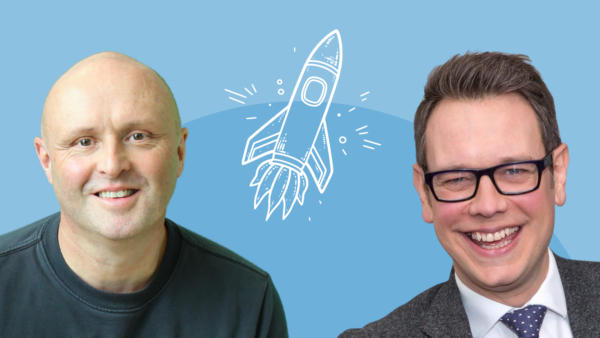Podcast transcript:
One of the top priorities for HR leaders in 2023? Organisational change.
If change is everywhere, and we know it is everywhere, how can we keep our people insulated from change fatigue? That’s the topic of today’s episode on combatting change fatigue with strengths.
According to consulting firm Gartner, organisational design and change management is a top priority for 53% of HR leaders as they face into 2023. At the same time, 45% of HR leaders say that their employees are fatigued from all the change.
Employees are also getting more resistant to change — in 2016, the Gartner Workforce Change Survey reported that 74% of employees were willing to change their behaviour at work to support organisational changes, but by 2022, that number had almost halved, to 38%.
Gartner’s research found that smaller scale, personal changes — getting assigned to a new manager or moving to a new team — are 2.5x more fatiguing than larger transformational changes like mergers or acquisitions.
So how do you keep employees on the change bus, because it’s our people who won’t just be required to change, they’re needed to drive and champion change. Ultimately, it’s people who make a change in process or organisation design the new way of doing things.
I have four ways of making this possible which bring change management right up to date. My four tips for combatting employee change fatigue are:
- Focus on meaning
- Co-design based on employee experience
- Prioritise belonging and inclusion
- Empower with strengths.
1. Combatting change fatigue by focusing on meaning
People crave meaning – they need to understand the why. So start there. Top-down initiatives delivered with little explanation don’t cut it anymore (that is, if they ever did). Today’s employees need to know why a team or department is being restructured, why the workspace is being redesigned, why the employee benefits scheme is getting an overhaul, why a division is being wound up.
You don’t have to go overboard with explanation, just explain succinctly and clearly the business reasons and the human impact involved in a change. That way, people will feel more trusting of the decisions being taken and more likely to engage with whatever is being asked of them as regards changes in their world.
2. Co-design change initiatives based on ‘employee experience’ principles
What is the ‘employee experience’ approach? Well it’s an HR approach that treats your people as important customers. It’s seeing the world through the eyes of employees, staying connected with them, co-designing people solutions, then implementing initiatives that meet your employees’ needs.
And in the context of change, this can go a step further by involving employees in decision-making, creating more of an ‘open source’ approach to change planning where all ideas and views are heard. Again, rather than change being dictated from the top, instead using the employee experience approach, it is co-designed through consultation and collaboration with change initiatives and role change being co-created and co-owned.
3. Prioritise belonging and inclusion to build resilience
Feeling that they’re part of a close-knit team with a shared goal can help insulate people against change…after change…after change. Because your functional team is where you will get a sense of shared identity and purpose. So even when your team is being asked to change or restructure, if team members feel that they belong and that their opinions matter, they will engage with change because the team matters to them as much, if not more than, their individual needs. They will also likely feel more resilient when delivering the change takes longer and is more difficult than was originally anticipated.
On the other hand, when people feel isolated, when they don’t feel part of a meaningful work unit, they’re more likely to resist change in order to create a sense of certainty at a moment of uncertainty. So make belonging and inclusion a people goal for the year ahead and people will be less likely to resist change and less likely to get exhausted from it.
4. Empower with strengths – give people choice to use their strengths to navigate change
Finally, get strengths involved. When facing into change, one of the most powerful tools at HR’s disposal is to ask people to bring their strengths into action, to empower with strengths, to help structure, organise and deliver the changes required.
As a minimum, this will ensure that employees adopt a more ‘can do’ approach because they can tool themselves up with strengths as change comes over the hill – using Collaboration to buddy up through the change, using Optimism to see the positives, using Enthusiasm to get behind the best change ideas, using Creativity to find a way through that hasn’t been thought of before.
But at its best, the strengths approach can align with co-design principles and promote a sense of belonging and inclusion by asking employees to be the initiators, organisers and deliverers of change.
Get the right people bringing Detail orientation, Efficiency and Results focus and you have a change management planning team.
Combine Common sense, Creativity and Critical thinking strengths and you will be able to punch through any gnarly change problem by coming up with solutions that will hit the mark.
And bring in Relationship building, Courage and Enthusiasm to engage people in the why of change.
All of a sudden, you can see that everything you need to effect successful change is right there in the shape of your people’s strengths. So use them. They are your most potent energy source.
Take on change fatigue by bringing your change management approach up-to-date
Those are my 4 tips to avoid change fatigue. If further change is expected by the majority of HR executives in 2023, the game is going to be to deliver it through, and not to, employees.
This will need a change in mindset and some flipped thinking to put the power in the hands of the people. But when this is well designed, the results will be lowered change fatigue and a much greater sense of change ownership and accountability. Till next time, stay strong.













